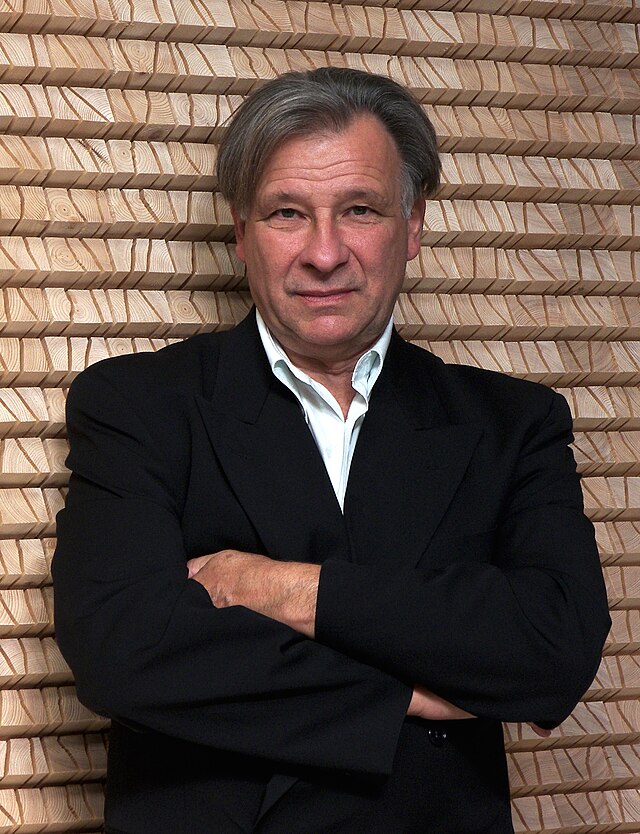Top Qs
Timeline
Chat
Perspective
Wysoczański
Polish noble family From Wikipedia, the free encyclopedia
Remove ads
Wysoczański plural: Wysoczańscy (with by-names such as “de Weryha”, “Minkowicz” or “Pietrusiewicz”) is the surname of a Polish szlachta (nobility) family, which traces its lineage back to Comes Vane Valachus[3][4] who was granted land in 1431 by Polish King Ladislaus II. Jagiełło. Hereditary Chevaliers of Galicia (“Ritter”) since 1782.







Remove ads
Notable family members
- Albin Kazimierz Weryha-Wysoczański-Pietrusiewicz, 1st Hereditary Chevalier of Galicia 1782, landowner, Member of the Galician Parliament[1]
- Basil Weryha-Wysoczański-Pietrusiewicz (1816-1891), 1st Hereditary Chevalier of Galicia, wholesale merchant, landowner, town property owner[5] and philanthropist in Odessa about whom a biography was published in 1892 and a novel in 1930[6]
- Wilhelmine Weryha-Wysoczańska-Pietrusiewicz, only child of Basil, 1st Chevalier de Weryha-Wysoczański-Pietrusiewicz, heiress apparent to her father's fortune, died prematurely at age 19 in Cannes in 1884, married to a Swiss rentier[7]
- Bronisław Eugeniusz de Minkowicz Wysoczański (1881-1955), 3rd and last Hereditary Chevalier of Galicia, Ph.D., novelist, industrialist, Honorary Consul of the Yugoslavian Kingdom, Commander of the Order of Saint Sava[8]
- Jakub Weryha-Wysoczański-Pietrusiewicz (born 1974), Hereditary Chevalier of Galicia, Executive Board Member of Gemius S.A., President of the Board of Gemius Polska[5]
- Barbara Weryha-Wysoczańska-Pietrusiewicz (born 1949), Madame, Olympic Bronze Medallist and Vice World Champion in fencing, wife of Chevalier Ryszard Weryha-Wysoczański-Pietrusiewicz, Ph.D.
- Jan de Weryha-Wysoczański-Pietrusiewicz (born 1950), 6th Hereditary Chevalier of Galicia, artist
- Rafael de Weryha-Wysoczański-Pietrusiewicz (born 1975), Hereditary Chevalier of Galicia, Ph.D., writer, art historian[9]
Remove ads
In popular culture
Geography
- In Sokal, a town in the Austro-Hungarian Empire, “one of the prettiest streets” was named after Eugenius, 1st Chevalier de Minkowicz Wysoczański.[10]
Literature
- In Ivan Fylypchak's biographical novel Willpower (Lwów 1930; second edition Sambor 1999) the book depicts the life of Basil, 1st Chevalier de Weryha-Wysoczański-Pietrusiewicz[6] who is going by his real name in the book, although some facts were changed for dramatic reasons.
- In Józef Dunin Karwicki's Memoirs of a Volyn Man (Lwów 1897) the author makes mention of Basil, 1st Chevalier de Weryha-Wysoczański-Pietrusiewicz.
- In Janina Kościałkowska's memoir Beech Boat (Columbia 1993) the author mentions Hedwig de Minkowicz-Wysoczańska as the girl with "the whole Mikolasch Arcade in her dowry". Hedwig was the daughter of Bronislas, 3rd and last Chevalier, she married Stanislas Longchamps de Bérier.[8] The Mikolasch Arcade was Lwów's most famous shopping arcade with a length of 120 metres and a glass roof of some 18 metres width.
- In Konstantin Paustovsky's six part autobiographical novel cycle Story of a Life the first part Distant Years (London 1964) is to a big part made up of the description of his Wysoczański relatives, as for example the three brothers of his mother who, according to Paustovsky, all attended the Kyiv Cadet Corps and were all inscribed into the Kyiv Register of the Nobility.[11] Out of these Alexey was a tsarist Colonel and "Uncle Kolja" was a Major General who was murdered by the Soviets in 1929. The book includes a description of a ball in a country house as well as going fishing with Uncle Kolja in the dramatic Russian country side.
- In Chevalier Rafael de Weryha-Wysoczański's memoirs A Chevalier from Poland (Kibworth Beauchamp 2016) the first chapter of the book recalls the history and notable members of the family.
- In Demeter Więckowski's biography (Lwów 1892) the author describes the life of Basil, 1st Chevalier de Weryha-Wysoczański-Pietrusiewicz and the erection of the church he donated to his village of birth. The writer and poet Demeter Więckowski was married to Anna de Weryha-Wysoczańska-Pietrusiewicz, a niece of Basil, 1st Chevalier.[7] Their son was Yaroslav Yaroslavenko, the composer, for whom Basil, 1st Chevalier, stood sponsor.
Remove ads
References
Sources
Wikiwand - on
Seamless Wikipedia browsing. On steroids.
Remove ads
